Why is social media analytics important?
Social media analytics is important for several key reasons in digital marketing:
- Informed Decision-Making: Analytics provide valuable insights into user behavior and preferences, allowing marketers to make data-driven decisions. By understanding what content performs best, at what times, and with which audiences, businesses can optimize their strategies to better meet their goals.
- Enhanced Customer Engagement: By analyzing engagement metrics such as likes, shares, comments, and mentions, companies can understand what resonates with their audience. This knowledge helps in crafting content that sparks interest and interaction, thus fostering deeper connections with customers.
- Campaign Performance Measurement: Social media analytics allow marketers to measure the effectiveness of their campaigns in real time. They can quickly see what is working and what isn’t, enabling them to adjust tactics on the fly to improve results.
- Resource Allocation: With insights from social media analytics, businesses can better allocate their budgets and resources. By identifying the most effective platforms and content types, companies can invest more wisely, maximizing ROI.
- Competitive Analysis: Social media analytics also provide an overview of what competitors are doing, which can inform strategic decisions. Understanding competitors’ successes and failures in social media can help businesses refine their own strategies.
- Trend Identification: Analytics help in spotting trends as they emerge, giving businesses a head start in leveraging new opportunities. Whether it’s a viral content type or a shift in consumer sentiment, being able to quickly adapt to these changes can give a significant competitive edge.
Why Digital Marketing is the Key to Success for Your Business
What are the use cases of social media analytics?
The use cases of social media analytics include:
- Driving innovation by using analytics to gather customer feedback and insights from social media to improve products or services.
- Building and maintaining customer relationships by responding quickly to customer concerns and monitoring untagged brand mentions.
- Measuring brand health to understand customer sentiment and reputation.
- Optimizing social media strategies by analyzing customer conversations, competitor products, and product categories.
- Enhancing customer engagement by identifying influencers, monitoring engagement levels, and targeting the right audience for campaigns.
learn more about: how to get influencer to promote your product
What metrics should be tracked with social media analytics?
The metrics that should be tracked with social media analytics include:
- Reach: The number of people who have seen your content.
- Engagement: Likes, comments, shares, and other interactions with your content.
- Click-through rate: The percentage of people who click on your content.
- Conversion rate: The percentage of people who take a desired action, such as making a purchase.
- Audience demographics: Age, gender, location, and other characteristics of your followers.
- Sentiment: The overall sentiment (positive, negative, or neutral) towards your brand.
What are the types of social media analytics?
Social media analytics can be broadly categorized into four main types, each providing different insights that help businesses tailor their strategies and understand their social media performance:
- Descriptive Analytics: This type of analytics focuses on what has happened over a certain period on social media. It involves tracking and reviewing historical data to identify patterns and trends. Metrics such as likes, shares, comments, post reach, and follower growth fall under this category. Descriptive analytics help paint a picture of past social media performance.
- Diagnostic Analytics: This form delves deeper into the data to answer why certain things happened. It involves more detailed data examination and often uses techniques such as drill-down, data discovery, data mining, and correlations. Diagnostic analytics can help uncover reasons behind a surge in follower count or a drop in engagement rates.
- Predictive Analytics: As the name suggests, predictive analytics uses data to forecast future outcomes. This type relies on statistical models and forecast techniques to predict future social media trends and behaviors based on historical data. This can be particularly useful for planning future campaigns or understanding how changes in strategy could impact outcomes.
- Prescriptive Analytics: This advanced form of analytics not only anticipates what will happen and when it will happen but also why it will happen, providing recommendations for ways in which businesses can effectively respond. Prescriptive analytics uses insights from predictive analytics to advise on possible outcomes and can suggest decision options to achieve desired marketing goals.
What are the best social media analytics tools?
The best social media analytics tools, according to the provided sources, include:
- Sprout Social
- Hootsuite
- Buffer
- HubSpot
- Later
- Rival IQ
- Talkwalker
Advantages of Using Social Media Analytics
The advantages of using social media analytics include:
- Understanding Your Audience Better: Social media analytics tools help in gathering feedback and customer segmentation, enabling businesses to understand their audience’s attitudes, behavior, and preferences more effectively.
- Analyzing Competitors: Social media analytics tools provide insights into competitors’ strategies, helping businesses make better decisions and learn from competitors’ successes and failures.
- Planning Effective Strategies: By optimizing strategies and analyzing their impact, social media analytics tools assist businesses in refining their marketing strategies and eliminating ineffective steps.
- Enhancing Content Creation: These tools aid in tracking networks and identifying high-performing content, allowing businesses to refine their content creation strategies to align with audience preferences.
- Real-time Performance Monitoring: Social media analytics tools offer real-time monitoring of social media activities, enabling businesses to stay updated on trends, audience engagement, and campaign impact for immediate adjustments.
- ROI Measurement: Businesses can measure the return on investment of their social media efforts by tracking key performance indicators like conversion rates, click-through rates, and engagement metrics to assess campaign effectiveness.
- Data-Driven Decision-Making: Social media analytics tools empower businesses to make informed decisions based on quantifiable data, leading to more successful outcomes in content creation, audience targeting, and overall social media strategy.
- Analyzing Social Media Campaigns: These tools are crucial for optimizing digital marketing campaigns, rectifying issues, and ensuring that campaigns align with business goals and strategies for maximum impact and success.
How social media analytics helps in improving ROI
Social media analytics, along with media analytics, helps in improving ROI by providing businesses with valuable insights and data to measure the effectiveness of their social media marketing efforts. By tracking key metrics like reach, engagement, conversion rates, and audience demographics, businesses can optimize their strategies, target the right audience, and allocate resources effectively. Social media analytics also enable businesses to measure the impact of their campaigns, make data-driven decisions, and continuously improve their strategies based on real-time feedback and performance data. What is media analytics? This data-driven approach helps in maximizing the return on investment (ROI) by ensuring that social media efforts are targeted, efficient, and aligned with business goals.
How to use digital marketing analytics in your strategy
To use digital marketing analytics in your strategy, follow these steps:
- Set Your Objectives and Select Appropriate Metrics: Define clear, measurable goals that align with your business objectives. Choose relevant metrics that can be broken down into achievable steps. Ensure that your metrics are aligned with the specific project or campaign you are working on.
- Choose the Right Tools: Select the appropriate digital marketing analytics tools to help you track and measure your chosen metrics. Tools like Google Analytics for web analytics, Sprout or Hootsuite for social media analytics, and MailChimp or HubSpot for email marketing analytics can provide valuable insights into your campaigns.
By setting clear objectives, selecting relevant metrics, and utilizing the right tools, you can effectively leverage digital marketing analytics to optimize your strategies, measure performance, and make data-driven decisions to enhance your marketing efforts and achieve your business goals.
should you hire digital marketing agency for social media analytics?
Hiring a digital marketing agency like Ergasti for social media analytics can be a strategic decision for businesses. Ergasti, an award-winning agency with a diverse team of innovative thinkers specializing in marketing, development, and media buying, can provide valuable insights and expertise in social media analytics. By leveraging Ergasti’s experience and industry knowledge, businesses can benefit from tailored strategies, data-driven decision-making, and optimized social media campaigns to improve ROI and achieve their marketing goals effectively.
Conclusion
here are the key takeaways about using digital marketing analytics:
- Define Clear Goals and KPIs: Start by setting specific, measurable goals and identifying the key performance indicators (KPIs) that align with your business objectives. This will help you track progress and focus on the metrics that matter most.
- Utilize the Right Analytics Tools: Choose the appropriate digital marketing analytics tools, such as Google Analytics, Sprout Social, or Hootsuite, to track and measure your chosen metrics across various channels like website, social media, email, and e-commerce.
- Monitor Website Traffic and User Behavior: Analyze website traffic sources, popular pages, and user journeys to optimize the user experience and drive more conversions. Pay close attention to mobile traffic and behavior.
- Track Marketing Campaign Performance: Measure the effectiveness of your marketing campaigns by tracking metrics like click-through rates, conversion rates, and cost per acquisition. Use this data to allocate your budget and resources more effectively.
- Leverage A/B Testing: Conduct A/B testing to compare different versions of web pages, marketing content, or campaigns, and use the data to make data-driven decisions that improve conversion rates.
- Analyze Social Media Data: Utilize social media analytics to gain insights into your audience, engagement, and content performance, and optimize your social media strategy accordingly.
- Continuously Improve Your Strategy: Regularly monitor your analytics data and make iterative improvements to your digital marketing strategy to stay ahead of the competition and drive better ROI.
By following these key takeaways, businesses can effectively leverage digital marketing analytics to make informed decisions, optimize their strategies, and achieve their marketing goals.
FAQ
- Q: What is the best way to start with social media analytics?
- Start by defining clear objectives, selecting relevant metrics, and choosing a robust analytics tool.
- Q: How often should I check my social media analytics?
- Regular monitoring is recommended, with a more comprehensive review typically conducted monthly or quarterly to align with strategic planning cycles.

